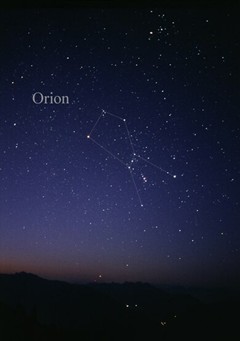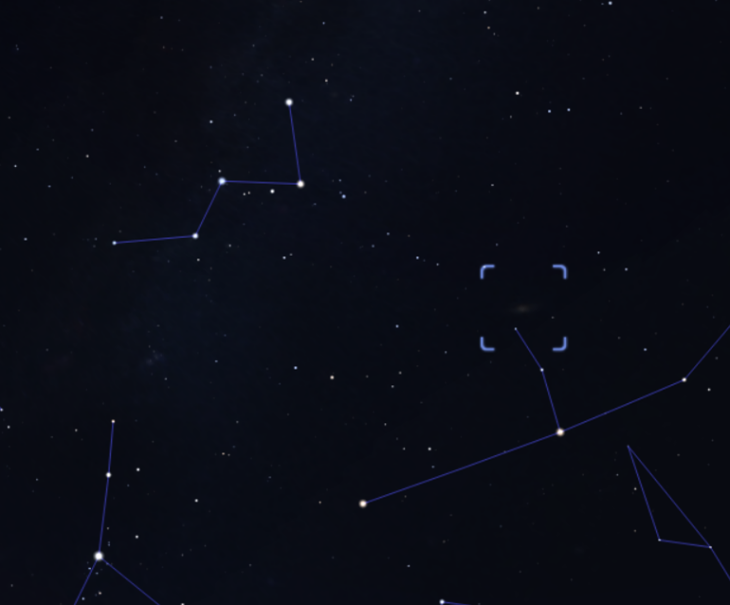What's Up? November 2024
With the onset of Winter, the smell of fireworks in the air and with the clocks having gone back at the end of October, November offers us great dark skies. It is truly a brilliant time of year for stargazing.
Constellations
As mentioned last month, Cassiopeia remains very close to the Zenith (the point directly above your head) but November sees the magnificent constellation of Orion viable in the east nearer the end of the month at around 9pm. This constellation is magnificent and a sure sign that Winter is on the way! There are many treasures to observe in or around Orion, one of which is the famous red super-giant star Beetlejuice (or Betelgeuse, and old Arabic word for “armpit”) which represents Orion’s left shoulder as seen from Earth.
 Image: The constellation of Orion will be rising in the east in November with the bright orange star visible as Orion’s left shoulder (as we look at it)
Image: The constellation of Orion will be rising in the east in November with the bright orange star visible as Orion’s left shoulder (as we look at it)
Credit: Wikipedia
Deep Sky Object
The Andromeda galaxy is very well positioned high in the sky during November. It is visible with the naked eye from a dark sky site and visible as a dim smudge. It’s the most distant object in the Universe that the unaided eye can see! It is approximately 2.5 billion light-years away (meaning the light you see has taken 2.5 billion years to get to your eye travelling at 186,000 miles per second!).
November is still a great time of year to see the Milky Way arching across the sky from roughly east to west. It’s amazing to see one of the spiral arms of our Galaxy with the unaided eye. It’s estimated that over half of the UK population have never seen the Milky Way so it’s definitely one to look out for!
 Image: The andromeda galaxy (highlighted) can be found by using the constellation of Cassiopeia as a “signpost”
Image: The andromeda galaxy (highlighted) can be found by using the constellation of Cassiopeia as a “signpost”
Credit: Stellarium software
Meteor Showers
November sees the return of 2 meteor showers.
The first of these is the Taurids which peak on the night of 12th – 13th November. These meteors originate from the Comet Encke and are not particularly frequent (around 5 an hour) but are known to move relatively slowly through the sky compared to other meteor showers.
The second shower is the Leonid meteor shower peaking on the night of the 18th November. Comet 55P/Tempel-Tuttle is the origin producing these bright, fast meteors with an average of around 10 an hour.
Unfortunately, this year sees both peaks blighted by the brightness of the Moon which is full on the 15th November.
Our Solar System
If you ask most astronomers what their favourite objects are to observe, the planets of Saturn & Jupiter are very likely to near the top of the list!
Jupiter is the brightest object in the sky this month, with the exception of the Moon, and continues to rise in the East throughout the month. Even with a small telescope or strong binoculars (7 x 50 minimum) you may be able to make out the 4 Galilean moons of Io, Europa, Ganymede and Callisto named after the famous Italian astronomer, physicist and engineer Galileo Galilei, who discovered them by using a homemade telescope in January 1610!
Saturn continues to impress in the south with its rings almost edge on. Despite the planet being about 865 million miles away and the rings being no more than 100 meters thick, you can see them through a small telescope which is always a beautiful sight.
Mars can also be seen low in the East after around 9pm from mid-November.
New Moon: 1st November
First Quarter: 9th November
Full Moon: 15th November
Last Quarter: 23rd November
Happy Stargazing!
















